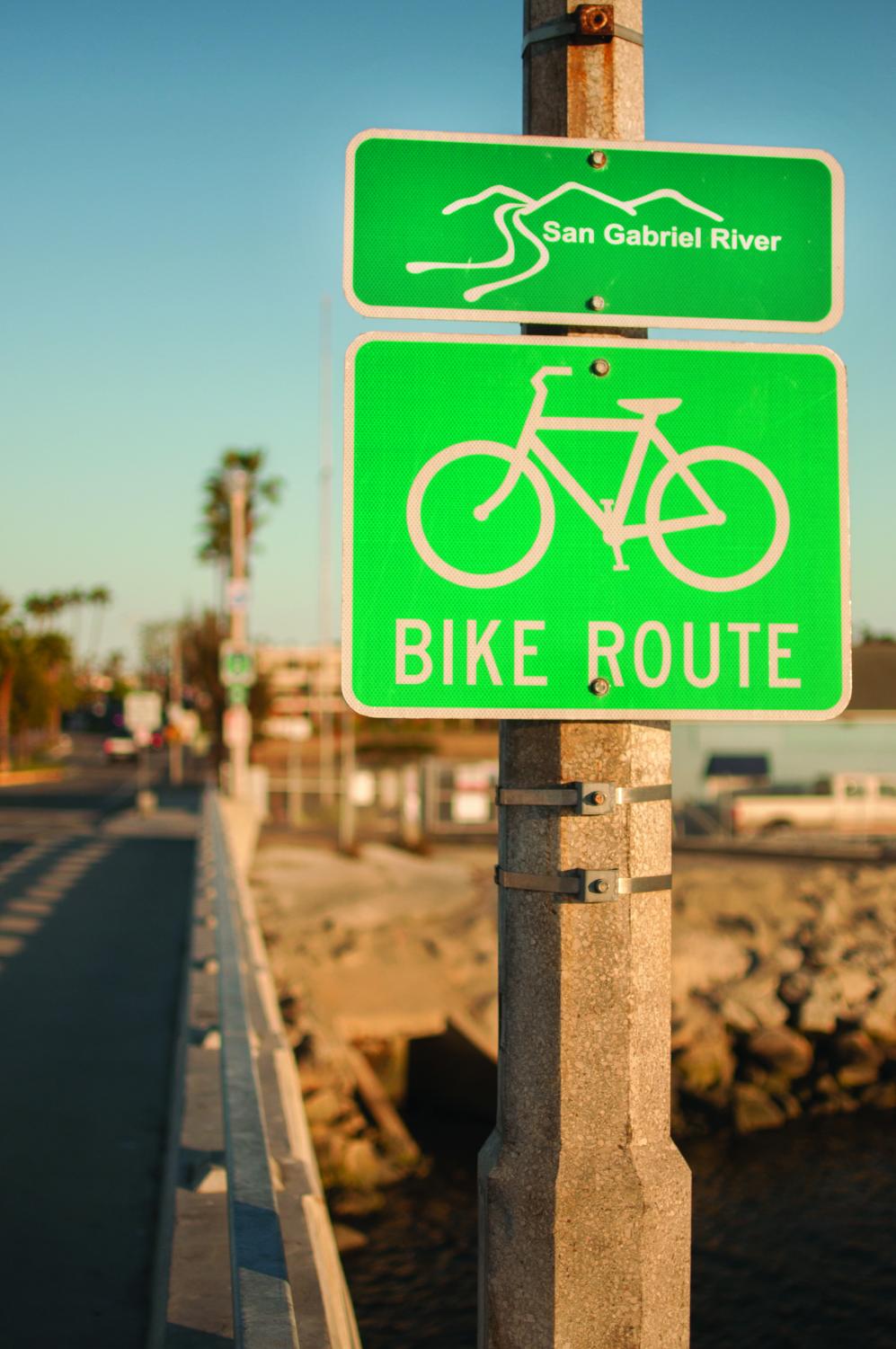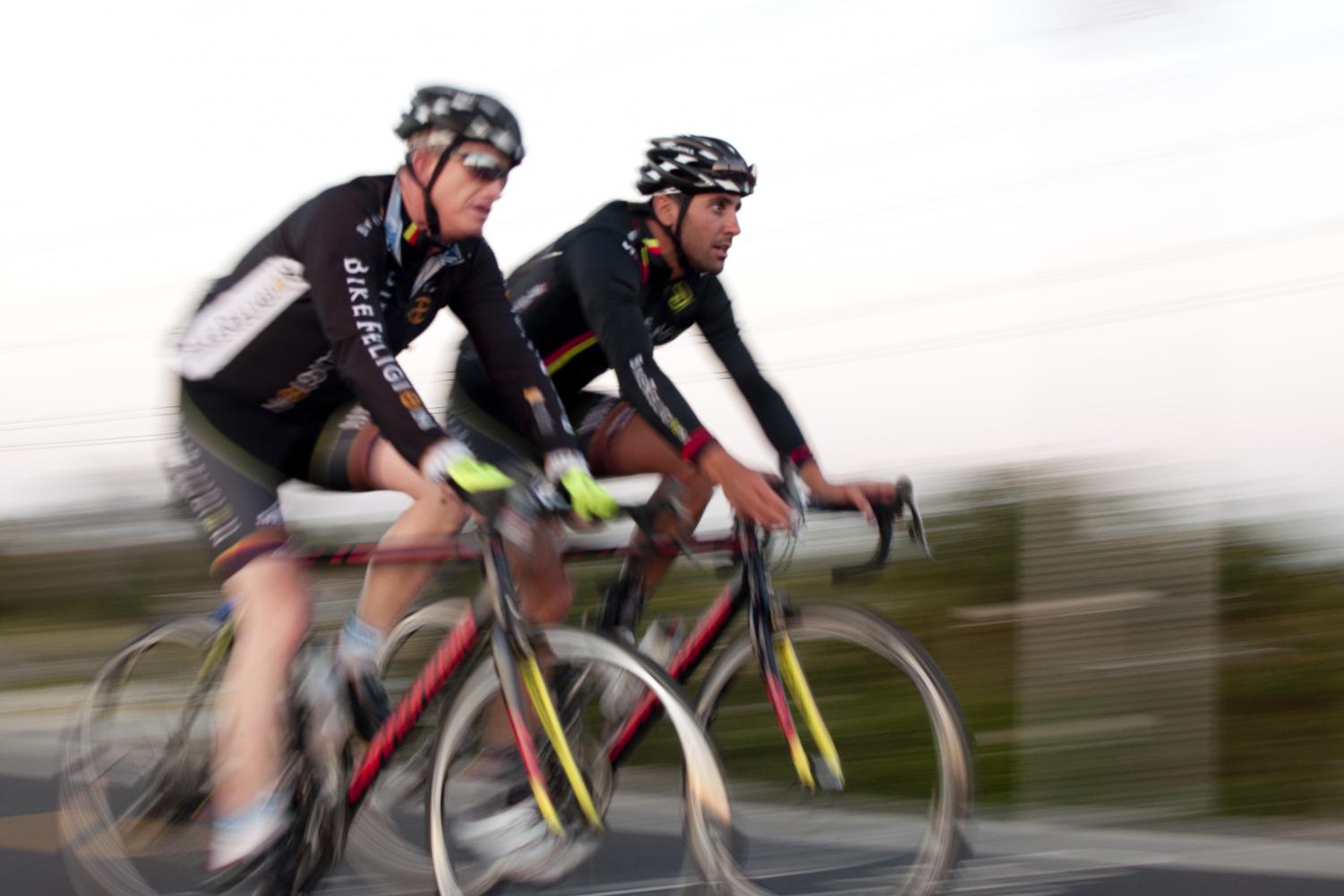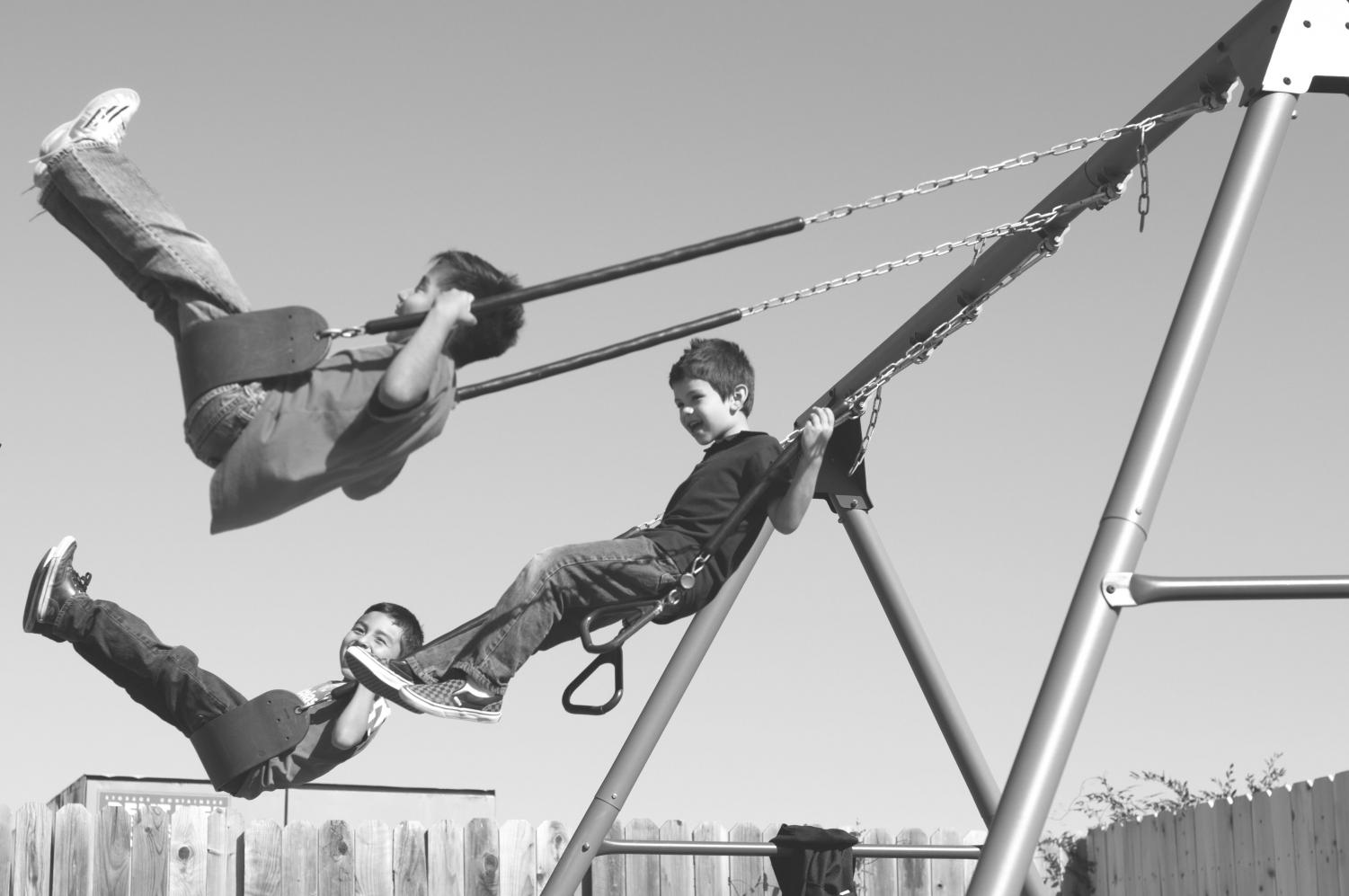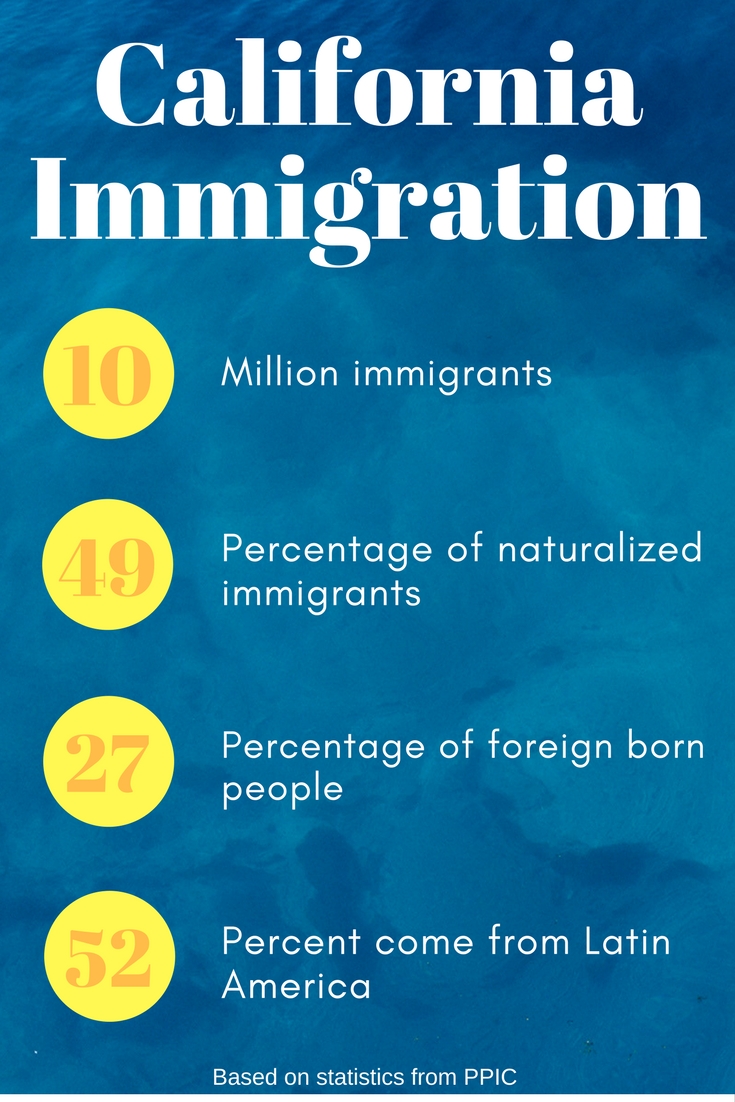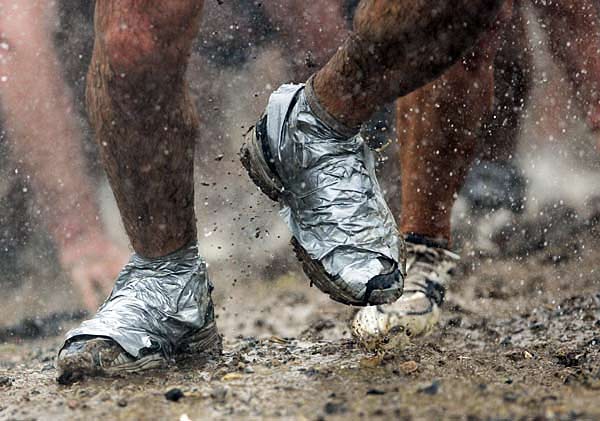Photography by Jonathan Hagen
Written by Ethan Froelich
Lloyd Peckham stared at the sweetgum tree in front of Thompson Hall and an idea began to form in his mind. The intercultural studies professor had just made it through three flats on his daily, 20-mile bike commute from Santa Ana, arriving onto Biola’s campus just in time. His class now over, Peckham had a Felt carbon-fiber 20-speed touring bike that was dead on the pavement, but somehow needed to get him to the nearest bike shop. The tree had his solution. Gathering leaves and small burrs, Peckham stuffed the space between the rim and his bike tire with the organic material. This alternative to air provided just enough cushion to allow him to arrive safely at a bike shop to buy much-needed new rims and tires.
This type of out-of-the-box thinking comes from a lifetime of bike riding. From his teenage years of riding everywhere on his bike, to riding through the jungles of the Philippines, Indonesia and Singapore during his 32-year missionary career; Peckham has found himself on a bike wherever he is.
“Most people have the bike, and have the desire, but they don’t know how to change their tires, or fix their bikes,” says Peckham. He warns lightheartedly, “If there is a bike that is broken at a bike rack on campus, there is a good chance you will see me trying to fix it.”
Los Angeles County does not show up on a list of the top 10 biking cities in America. Nor does it place on a list of the top 25 or 50. Los Angeles County, to the untrained eye, appears to have been swallowed by the car. Yet bikes have their own territory, sheltered from anything with a motor. Networks of trails like the Coyote Creek Bike Trail and the San Gabriel River Trail, which run through parts of LA County, are little-known highways of two-wheels.
With 710 bike spots available, according to Grounds Manager Jim Curran, and 436 registered bikes currently on campus, according to Justin Shelby, administrative operations manager at Campus Safety; Biola already hosts a student culture ready to bike. But before thousands of miles stick to a bike frame, and wheels have experienced countless flats, you need a training ground.
The Coyote Creek Bike Trail
The air smells fresher, as rains flood the concrete Coyote Creek drainage canal, resurrecting grasses along the sides of the elevated bike trail. Lemon and orange trees are producing, flowers are blooming; all trumpeting the return of spring. The Coyote Creek Bike Trail is a snake of pavement that has camouflaged itself among us. It is a narrow, two-lane, eight-mile strip of varying concrete and asphalt surfaces, running alongside the Coyote Creek drainage canal. After nine miles, Coyote Creek merges with the San Gabriel River Trail for the final four miles to Seal Beach and the Pacific ocean.
There are two main entrances to the trail in the La Mirada vicinity: one heading west on Rosecrans Avenue right after the train tracks halfway between Biola Avenue and the Interstate 5 freeway; the other is off Foster Avenue slightly farther north. An orange sign with authoritative black letters announce that the Coyote Creek Bike Trail is definitively closed from April 2012-June 2014 at the Rosecrans entrance. It lies.
To people who use the trail often, the sign is essentially meaningless. While the trail is indeed fenced off for a few hundred yards with metal beams lying beside churned earth, riders can simply walk their bikes down into Coyote Creek’s concrete riverbed, ride for less than a minute, and then walk their bikes back up onto the trail. Peckham takes students on rides down the trail and loves to see them “rough it” by having to hop down into the riverbed.
“It’s great to watch people get a more radical radius to their lives,” says Peckham. He says that people too often neglect fitness and do not get out into nature often enough, something that riding the trail remedies.
Zach De Vesta, a senior intercultural studies major, started biking last year, and has taken a few rides with Peckham down Coyote and San Gabriel. On two separate trips with Peckham, De Vesta rode a distance of 197 miles. The first ride was 100 miles from Ventura to Norwalk, back from the ICS retreat; the second was from Norwalk to Crystal Cove and back — a 97-mile round trip.
“Before I came to Biola I saw bikers as kind of annoying, but during the past few years I have grown to admire them,” says De Vesta. He now uses his 2007 Specialized, Hardrock mountain bike to commute to school and records 35-40 miles traveling from Norwalk to Biola each week.
Development and Use of the Bike Highways
Established back in the 1970s, the initiative for the bike trails was started by the Army Corps of Engineers who installed concrete flood channels around the then-existing Coyote River, after floods from the ‘40s.
Abu Yusuf, working for the LA County Department of Public Works under the Progress and Development Division, oversees the Coyote and San Gabriel trails. The funding for the trails comes from the government, he says, but each city that the trail runs through is responsible for maintaining their own section. If the trail were a cake, each city would be a hand; some willing to take large pieces for themselves, and others reluctant to put on the extra weight. There are segments to this trail; some more well-kept, others with cracked and parched asphalt, years-overdue for a makeover or at least a touch-up.
While Santa Fe Springs and Cerritos have kept the asphalt trail smooth and well-paved, the same cannot be said for the next two cities the trail passes through. After leaving Cerritos, the trail runs in between Hawaiian Gardens and Cypress, where it reaches its worst condition. Cracks snake their way through the sun-faded gray asphalt, where grass and weeds grow up through the pavement. The trail’s improvement is stark when it reaches Los Alamitos and Seal Beach. Here, serious bikers with thousand-dollar bikes ride in groups and the lanes become somewhat crowded. The scenery dramatically improves as well, with herons and other birds flying alongside the river banks below the trail, which are flanked with palms and other brush. Finally, the canal fills with more and more water until the beach and sea comes into view.
“It’s not highly scenic, looking at the concrete, but there is nothing like getting three miles down from the beach, and the concrete goes away,” says Mark Saucy, professor of theology at Talbot. Now 54, Saucy started biking 20 years ago and rides around 100 miles a week, mainly on the Coyote Creek and San Gabriel trails.
“It’s the time for me and my thoughts, it’s my soul time,” says Saucy. “My wife understands that this is where I solve my world’s problems, in a three hour bike ride.”
For Steve Herrera, owner of The Cyclery bike shop on the corner of Imperial Avenue and La Mirada Boulevard, the bike trails were something entirely different. He remembers waking up with his head resting on a curb and seeing what looked like jelly flowing down the pavement.
“I heard this gasp, from all the people who had collected to look at the dead guy,” says Herrera. “I started moving like in ‘Men In Black’ when the guy crawls out of the hole,” describes Herrera of his physical state.
His shoulder out of place, ear nearly torn off and blood everywhere, it took Herrera a long time to physically and mentally heal.
Taking to the Coyote Creek and San Gabriel river trails, he tried to forget the feel and sound of his wheel and bike frame snapping. He tried to forget how he had heard a short screech of the car that had hit him going around 60 mph.
“If affects you for a while; you become skittish at the sound of rubber on asphalt. It tightens up your belly,” says Herrera. For a while, every time he heard a car coming by him, his arms automatically turned his bike towards the curb, his body in autopilot forcing him to stop.
Today, at age 54, he races two to three times a month in competitive mountain bike races, qualifying for the Mountain Bike Cross-Country National Championship race every year since it began in 2004, besides 2010 when he was injured.
“If I qualify, I go. That’s my rule,” says Herrera, who races in the category 1 mountain bike racing division, one-step below the professional level.
Safety is always a concern on surface streets, especially the roads without bike lanes. The U.S. Center for Disease Control estimates that, on average, there are 700 bicycle deaths a year, as well as many more non-fatal incidents. While Herrera suggests that more bike lanes would make things safer, there is a different culture in the U.S. than other more bike-friendly countries or cities. Cities like Copenhagen and Amsterdam are built around the bike. When roads are constructed, the bike lane is always in mind. This is not the case in the United States.
Cycling as a Community
Today’s pavement-centered America, car-dominated roadways and spacious grids of ever-moving traffic can seem to conspire to make cycling an afterthought. Yet, despite the danger that seems to be involved, cycling to work, school, or as a hobby on America’s roadways is a reality more easily attained than people think. The bikes-only trails like Coyote Creek and San Gabriel are testaments to this biking community.
“It would be cool to have a Biola cycling club, with an epic name like, ‘The Wheelman of Biola,’” Saucy says.
He envisions professors and students joining together for communal rides and students taking up the initiative themselves. Peckham already goes on rides whenever he can, mostly with ICS students, but also with anyone else who wishes to join.
“The hope is to see if there is a community, reach out, tap it and pull people into it,” Herrera remarks when asked if he believes there is a bike community in the area. “I think there is the desire to be.”
As part of his intention to foster the bike community that might be present, Herrera’s shop is taking the initiative of sending out mass emails to its clients with information on the shop’s riding schedule. Every other Saturday, there will be three rides, starting with a beginner bike ride that starts at The Cyclery at 8 a.m. and completes a 10-mile loop via Beach Boulevard. At the same time on Saturday, two other rides: a serious road bike route up in the hills north of La Mirada, and a mountain bike route via the Fullerton Loop Bike Trail or Turnbull Canyon Road, will also start.
For Saucy, community with “a couple of buddies” was rekindled after he moved back from the mission field of Ukraine. Now, he completes three to four events a year with his friends, with the most recent event being the Palm Springs Century ‒ century referring to the 100 miles that were traversed. The ride was the most memorable trip for Saucy because of its 25 mph headwinds that were blowing riders off the road and sending them flying at 45 mph when the wind was at their back. These type of moments with friends, and the camaraderie that is developed, makes Saucy appreciate biking to its fullest.
“I like the speed, I like precision. To me it’s the perfect way to see something, to see an environment, an area. Walking is too slow, a car is too fast; a bike is perfect,” says Saucy.
The glory of biking is that you can always go farther. There is no light on your bike that turns on to tell you your tank is empty. As long as your legs can keep pedaling, you will keep moving.
Peckham is mounting his bike at 5 a.m. in Santa Ana, ready for his 20-mile commute to work. At 10 a.m., Herrera is opening his bike shop, a job he traded for his past corporate business life. Throughout the day, bikes will get students to and from classes, from their dorms to the supermarket, and for some their bikes will take them miles away. As the sun stays longer in the sky, specialized bikes, Canondales, fixies, road bikes, BMXs, beach cruisers and an odd assortment of other bikes are rejuvenated. Spring has awoken long-dormant local river bike trails, which, like many creatures, are cold-blooded; the warmer weather provides the motivation for many to get back out and ride. As 12 million cars travel their 300 million daily miles through Los Angeles County, spring encourages many to once again join a community of two wheels, rather than four.
